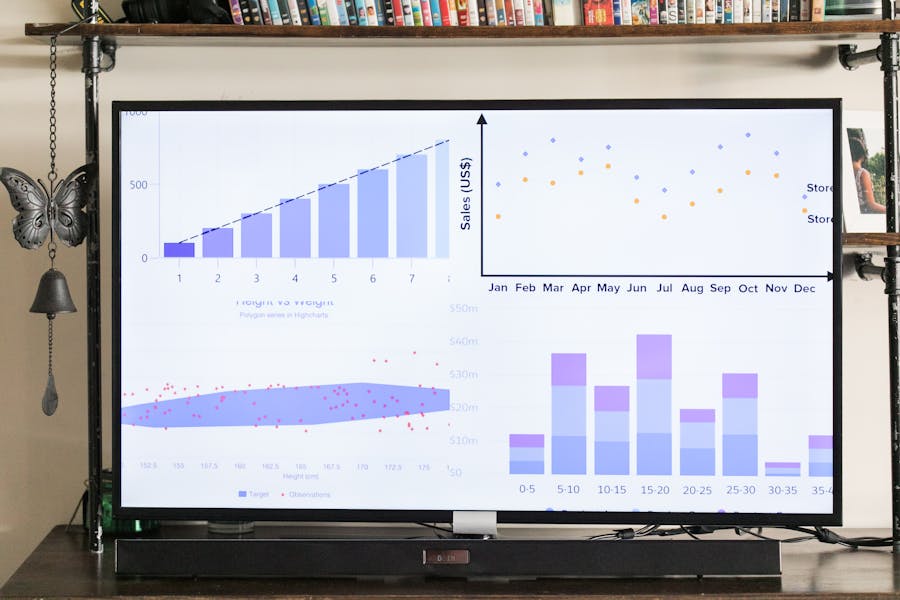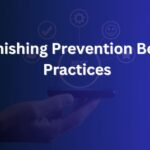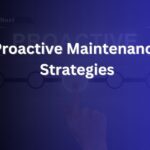Data powers every modern decision—from the price you pay for a ride-share to the alert that flags fraud on your card to the forecast your CEO reviews on Monday morning. Yet the raw data coming from apps, sensors, forms, and third-party systems is messy by default. The purpose of cleaning a data set is to transform that messy raw input into accurate, consistent, and analysis-ready information so you can trust the answers it yields. When you clean data, you reduce errors, remove duplicates, standardize formats, handle missing values responsibly, and document what changed—so downstream analytics, dashboards, and machine-learning models reflect reality rather than noise.
This long-form guide explains, in plain language, why cleaning matters, what “dirty” looks like in the real world, how to clean methodically, and how to prove the return on investment to stakeholders. You’ll learn practical checklists, pitfalls to avoid, and a 30/60/90-day plan you can apply in your team.
A Simple Definition—and Why It Exists
Data cleaning (sometimes called data cleansing) is the process of detecting and correcting errors, inconsistencies, and irrelevancies in datasets. It includes standardizing formats, validating ranges and business rules, resolving duplicates, handling missing values, fixing structural issues, and recording lineage so others can see what was altered and why.
Why does this process exist at all? Because data is an imperfect snapshot of the world. Humans mistype. Devices drift. Trackers change. Integrations misalign. Without cleaning, those imperfections become your “truth,” and you end up optimizing a business to the wrong reality.
The Core Purposes of Cleaning a Data Set
Accuracy: Make the Data Match the Real World
Cleaning ensures numbers, categories, and identifiers reflect what actually happened. Correcting typos, fixing decimal-place errors, and validating that “order_total ≥ 0” transforms dubious rows into reliable records. Accurate data eliminates phantom spikes and false trends.
Completeness: Fill Critical Gaps or Handle Them Safely
Not every field is equally important. Cleaning determines which missing values can be imputed or defaulted, which should be excluded from analysis, and which must trigger an escalation because the business depends on them. Thoughtful handling of missingness prevents silent bias.
Consistency: Speak the Same Language Across Sources
The same concept should look the same wherever it appears. Cleaning standardizes dates, country codes, currencies, encodings, and category labels—so joins work, aggregations are correct, and dashboards align.
Uniqueness: Remove Duplicates That Mislead Metrics
Duplicate customers inflate user counts; duplicate transactions inflate revenue; duplicate events inflate conversion rates. Cleaning merges or removes dupes and preserves a “golden record” per entity.
Validity: Enforce Business Rules and Constraints
Dates should be real dates, IDs should be unique, and relationships should obey the domain (e.g., every invoice belongs to an existing customer). Cleaning encodes these constraints as tests so violations are caught automatically.
Efficiency: Cut Noise to Save Time and Compute
Storing, transforming, and visualizing junk data costs money and attention. Cleaning reduces volume, speeds up pipelines, and makes analysis faster and cheaper.
Better Decisions: Build Trust in Dashboards and Reports
Clean data underpins confident decisions. Stakeholders stop arguing about whose number is “right” and start debating strategy.
Improved Model Performance: Feed ML Systems Quality Inputs
Machine-learning models trained on clean, representative, well-labeled data generalize better, require fewer guardrails, and fail less often in production.
Compliance and Risk Management: Meet Legal and Ethical Standards
Clean, well-governed data helps satisfy privacy and accuracy requirements, reduces accidental exposure of personal information, and keeps audits tractable.
What “Dirty Data” Looks Like (and Why It Sneaks In)
Typos and Transcription Errors
A clerk types 10,000 instead of 100.00. A decimal point shifts. A character encoding swaps accented names for gibberish. These errors distort aggregates and trigger spurious alerts.
Inconsistent Formats
Your CRM stores “California,” your marketing tool stores “CA,” and your finance system stores “Calif.” Similarly, dates arrive as YYYY-MM-DD, MM/DD/YYYY, and text strings like “Jan 5th.” Inconsistent formats break joins and create “missing” values that are really parse failures.
Duplicates
The same person appears as two customers because one record uses a personal email and the other uses a work email. The same purchase logs multiple times due to retry logic. Duplicates inflate funnels and lifetime value.
Missing Values
Critical fields like email, product ID, or consent flag are null. If you impute incorrectly or ignore the missingness mechanism, your analysis drifts and your model learns the wrong patterns.
Outliers from Recording Mistakes
A temperature sensor freezes and reports zeros; a payment gateway logs a negative quantity; a time tracker returns dates in 1900. Outliers can be real and meaningful—but often they’re recording artifacts.
Timezone and Clock Skew
Events stored in local time appear to travel backward or overlap. Daylight saving shifts make “daily” metrics inconsistent. Clock skew across devices creates impossible sequences.
Schema Drift and Tracking Plan Rot
A product team renames an event or changes a property without warning. A vendor adds a new default value. Pipelines keep flowing, but your definitions stop matching reality.
Free-Text PII Smears
Support notes or form comments spill personal data into fields that weren’t intended to store it, creating privacy and retention headaches.
Real-World Consequences of Skipping Cleaning
Retail and eCommerce
Duplicate SKUs and inconsistent variant attributes cause stock counts to misalign across systems. You over-order slow items, under-order fast ones, and run promos on the wrong inventory. Clean catalogs and canonical attributes fix the signal your demand models need.
Healthcare and Life Sciences
Inconsistent patient identifiers and sparse vitals make cohort studies fragile. Mislinked records can distort trial outcomes or risk stratification. Clean identifiers, controlled vocabularies, and completeness checks protect care quality and research validity.
Financial Services
Duplicate transactions and stale FX rates misstate revenue and risk. Clean reconciliations, validated exchange rates, and normalized merchant codes make risk scoring trustworthy and regulatory reporting smoother.
SaaS and B2B
CRMs fill with duplicate accounts and leads. Sales forecasts swing wildly because lifecycle stages are inconsistently applied. Entity resolution and standardized funnel definitions restore credibility to pipeline reviews.
Public Policy and Research
If you’re analyzing human outcomes—say, the prevalence of trauma in collision survivors—noisy or incomplete records can bias conclusions. Clean, well-documented datasets matter greatly when reviewing sensitive topics such as PTSD in the aftermath of crashes; for a broader human context, consider materials like PTSD After a Car Accident as a reminder of how critical accurate data is when real people are involved.
Cleaning vs. Preprocessing vs. Wrangling: What’s the Difference?
- Cleaning makes the data correct and consistent (fix truth).
- Preprocessing prepares the data for a particular analysis or model (shape for purpose)—scaling, encoding, feature construction.
- Wrangling (or munging) is the broader hands-on manipulation of data to make it useful, often including both cleaning and preprocessing.
Keeping these terms straight helps teams set the right acceptance criteria at each step.
A Practical, Repeatable Workflow for Cleaning Data
1) Profile Before You Touch Anything
Start with exploratory profiling: null ratios, distinct counts, min/max, regex pattern matches, join key uniqueness, and distribution histograms. Profiling turns “I suspect” into “I know,” and it reveals the 20% of issues that cause 80% of pain.
2) Turn Business Rules into Tests
Encode rules like “country ∈ ISO-3166,” “emails match RFC patterns,” “order_total ≥ 0,” “if status = ‘refunded’ then refund_timestamp not null.” Store tests alongside transformations. Break the build when rules fail.
3) Standardize at Ingestion
Normalize encodings to UTF-8, trim whitespace, unify case where appropriate, parse datetimes to UTC, and harmonize units (kg vs lb, cents vs dollars). Early standardization prevents downstream chaos.
4) Handle Missingness Deliberately
Choose a per-field strategy:
- Impute where the distribution is stable (e.g., median delivery time).
- Default where a missing value is semantically “false” or “unknown.”
- Drop rows or fields when missingness is random and impact is low.
- Escalate and block when a critical field should never be missing.
Document your assumptions and measure the impact.
5) De-Duplicate with Entity Resolution
Use deterministic keys when available; otherwise combine probabilistic matching (name + address + phone with weights) and fuzzy matching (edit distance, phonetics) to merge duplicates. Keep a survivorship policy (which field wins, at what confidence) and retain a link back to source records.
6) Detect and Treat Anomalies
Blend rule-based thresholds with robust statistics (median absolute deviation), time-series decomposition for seasonal data, and outlier detection models. Review anomalies with domain experts; not every spike is an error.
7) Validate Relationships
Enforce foreign-key integrity and domain logic: every order must link to an existing customer; subscriptions can’t end before they start; payments reconcile to invoice totals within tolerance.
8) Document Lineage and Decisions
Record what changed, why it changed, and who approved the rule. Push this metadata to a catalog so analysts and executives can click through from a dashboard number to the underlying transformations.
9) Reconcile End-to-End
Pick invariants (e.g., revenue totals per day) and reconcile across sources and pipeline stages. Reconciliation catches subtle defects a unit test won’t see.
10) Promote with Gates and Monitor Continuously
Move datasets from “raw” → “staged” → “trusted” only when they pass tests. Add monitors for freshness, volume, and distribution drift. Alert owners when thresholds breach and provide runbooks to resolve.
Techniques and Tools (Language-Agnostic Concepts You Can Apply Anywhere)
Parsing and Normalization
- Datetime parsing with explicit time zones and calendars.
- Address normalization with postal standards.
- Email/URL normalization and validation.
- Unicode normalization to handle diacritics and exotic scripts.
Categorical Standardization
- Controlled vocabularies and code sets (ISO, ICD, SIC, HS codes).
- Mapping tables to collapse synonyms and misspellings into canonical labels.
- Business logic to merge long tails (“Other”) responsibly.
Measurement Hygiene
- Units and precision handling (avoid mixing cents and dollars).
- Rounding rules and tolerances for financial reconciliation.
- Sensor calibration constants applied at ingestion.
Robust Missing-Data Methods
- Multiple imputation for analytics when single-value fills bias results.
- Masking strategies for models so they learn “missingness” as signal when appropriate.
- Sensitivity analysis showing how conclusions change under different assumptions.
Entity Resolution Patterns
- Blocking (limit comparisons to plausible pairs).
- Similarity features (token overlaps, phonetic codes, geographic distance).
- Graph clustering for households or organizations spanning multiple IDs.
- Human-in-the-loop review for ambiguous matches.
Cleaning for Machine Learning: Special Considerations
Label Quality and Consistency
Mislabels poison training. Institute label audits, inter-rater agreement checks, and consensus protocols. For programmatic labeling, validate heuristics against hand-labeled gold sets.
Imbalance and Representation
Under-represented classes reduce recall where it matters most. Combine sampling strategies (over/under), class-aware metrics, and domain-driven data collection to improve balance.
Data Leakage
Leakage occurs when training data includes information not available at prediction time (e.g., using a refund flag to predict refunds). Strict temporal splits and feature audits prevent inflated offline scores that collapse in production.
De-Duplication and Train/Test Contamination
Ensure near-duplicates don’t appear across splits. Otherwise the model “cheats” by memorizing rather than generalizing.
Distribution Shift and Drift
Monitor for covariate shift between training and live traffic. Cleaning ties into drift detection by flagging changes in missingness patterns, value distributions, and outliers that precede model performance drops.
Ethics and Fairness
Data cleaning intersects with fairness: removing biased labels, ensuring protected classes are represented appropriately, and documenting decision points that affect downstream impacts. Clean doesn’t just mean “error-free”—it means “fit for responsible use.”
Governance: Who Owns Data Quality and How to Keep It on Track
Clear Ownership
Assign data owners for domains (finance, product, marketing), stewards who write rules and resolve exceptions, and platform engineers who keep pipelines reliable. Without named owners, quality becomes “everyone’s problem” and no-one’s responsibility.
Data Contracts
A contract is a promise between producers and consumers about schema, meaning, and SLAs. If a producer changes a field or its semantics, CI pipelines catch and block the change until the contract is updated or a backward-compatible path is provided.
Change Management
All transformations, tests, and mappings live in version control. Changes move via pull requests with code owners and automated checks. A shared changelog communicates breaking changes ahead of time.
Documentation and Cataloging
Surface lineage, definitions, owners, and test statuses in a searchable catalog. Embed links from BI dashboards to the catalog so stakeholders can self-serve context.
How to Measure ROI (and Win Budget for Data Cleaning)
Operational Wins
- Fewer ad hoc “fix this query” requests.
- Less time spent firefighting pipeline incidents.
- Lower cloud storage/compute from pruning junk and deduplication.
Business Impact
- Lift in email deliverability and campaign conversion after de-duping contacts.
- Reduced refund/chargeback rates after fixing transaction reconciliation.
- Improved forecast accuracy and inventory turns with canonical product data.
Model Uplift
- Gains in accuracy/precision/recall/AUC after label audits and feature hygiene.
- Reduced false positives/negatives in fraud or risk models following outlier and leakage fixes.
Quantify before/after and share a quarterly “data quality scorecard” with leadership to cement support.
Common Pitfalls (and How to Avoid Them)
“We’ll Clean Later When We Scale.”
Defects compound. Start with the highest-impact rules now and iterate. Even five well-chosen tests can pay for themselves quickly.
Over-Imputation
Imputing everything makes numbers look tidy but may hide bias. Only impute with clear rationale, and mark imputed fields for transparency.
Silent “Fixes” in BI Layers
A quick calc in a dashboard hides the root cause and fragments logic. Fix upstream, test, and document.
One-Off CSV Surgery
Manual edits solve today’s crisis but create tomorrow’s mystery. Prefer scripted, reproducible transformations with diffs you can audit.
Treating All Fields as Equal
Focus on revenue-critical, risk-critical, and model-critical fields first. Prioritization turns cleaning into strategy rather than perfectionism.
How Often Should You Clean?
Continuously for Operational Data
Automate tests at ingestion and on promotion to “trusted.” Monitor freshness, volume, and distribution. Cleaning is a process, not a project.
On Schedule for Batch Analytics
Build daily and weekly cleaning jobs for reporting datasets, with reconciliation against invariants.
At Key Lifecycle Moments
When launching new events, adding a vendor, changing schemas, or retraining models, add or update tests and rules. Treat schema changes like API changes: versioned, reviewed, and communicated.
A 30/60/90-Day Plan to Operationalize Data Cleaning
Days 1–30: Baseline and Quick Wins
- Profile your top three revenue-critical tables.
- Add 10–20 high-leverage tests (nulls, ranges, foreign keys, enums).
- Standardize dates to UTC and countries to ISO codes.
- Set up daily quality summaries to Slack/Teams.
Days 31–60: Stabilize and Expand
- Implement entity resolution for customers or accounts with survivorship rules.
- Introduce data contracts for two producer systems and enforce in CI.
- Add drift monitors on key metrics (volume, distribution).
- Publish lineage in a catalog and link from top dashboards.
Days 61–90: Scale and Prove Value
- Extend tests to secondary domains (marketing, support).
- Tie quality improvements to model lift and campaign results.
- Archive or delete low-value, high-cost tables.
- Present a data quality scorecard to leadership with ROI highlights.
The Bottom Line
Cleaning a data set is not busywork. It is the foundation of every reliable report, experiment, and model your organization will ever produce. The purpose is simple but profound: make data trustworthy so decisions, automations, and products align with the real world. Treat data cleaning as continuous engineering—tests, contracts, monitoring, and documentation—and it becomes a compounding advantage. Your dashboards stop lying, your models become durable, your teams move faster, and your customers experience fewer errors. That is why, in 2025 and beyond, cleaning is not a phase to rush through—it is the bedrock of data-driven success.
Frequently Asked Questions
What is the main purpose of cleaning a data set?
To ensure the data is accurate, consistent, complete where it matters, and documented—so analytics and machine learning reflect reality and support trustworthy decisions.
Does data cleaning delete information?
Cleaning removes incorrect, duplicate, or irrelevant records and may drop unfixable rows when justified. It should preserve valuable information and document every change.
Is data cleaning necessary in every project?
Yes. The stakes vary, but any analysis based on unclean data risks misleading conclusions, wasted spend, and loss of stakeholder trust.
How is data cleaning done in practice?
With a mix of profiling, rules-as-code, standardization, deduplication, anomaly detection, relationship validation, and monitoring—implemented in SQL/ETL tools, Python/R notebooks, and pipeline frameworks. The key is repeatability and tests that run automatically.







